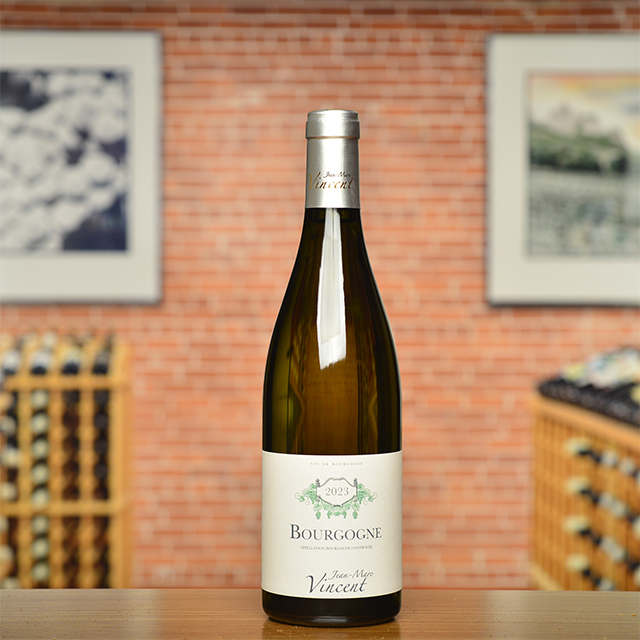Notify me
Vouvray Brut
Champalou
The Champalou family—Catherine, Didier, and their daughter, Céline—are Chenin Blanc specialists: from the vineyards around their home in the heart of the Vouvray appellation, they make wines in every style from the noble Pineau de la Loire, as the grape is also known. Their Vouvray pétillant is crafted in the méthode traditionelle: the secondary fermentation takes place in bottle, and then the wine is aged extensively on its lees—in this case, two years—before being disgorged and recorked. From clay and limestone vineyards, they are able to obtain remarkable complexity in their Brut, while the texture shows both a creamy richness and an austere minerality. For this reason, this wine makes a great bargain alternative to Champagne, but it is important not to overlook the fact that it comes from a terroir and grape variety of its own. The Champalous like to serve it at the end of a meal, but this dry sparkler works well from the apéritif all the way through dessert.
—Anthony Lynch
| Wine Type: | sparkling |
| Vintage: | NV |
| Bottle Size: | 750mL |
| Blend: | Chenin Blanc |
| Appellation: | Vouvray |
| Country: | France |
| Region: | Loire |
| Producer: | Champalou |
| Winemaker: | Catherine & Didier Champalou |
| Vineyard: | 20 years average, 3.5 ha |
| Soil: | Clay, Limestone |
| Farming: | Sustainable |
| Alcohol: | 13% |
More from this Producer or Region
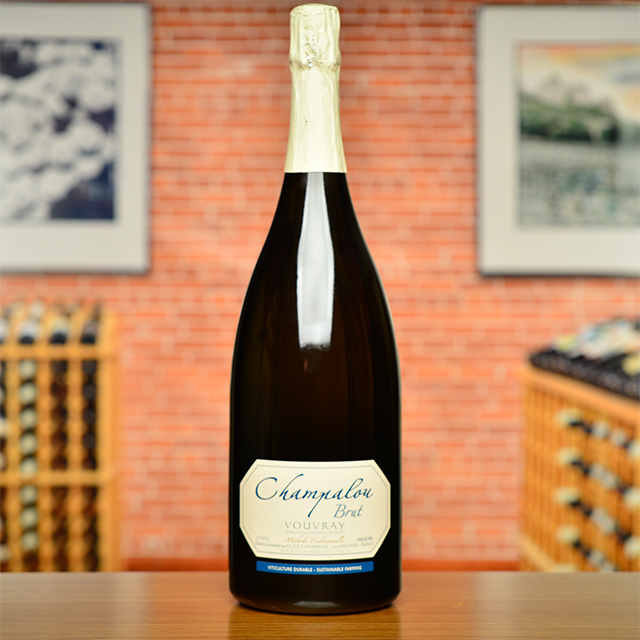
Vouvray Brut MAGNUM
France | Loire
A bubbly for any day of the week–bone-dry and super fresh

2024 Reuilly Pinot Gris Rosé
France | Loire
Citrusy aromatics, bracing salinity, and a mineral backbone make it a mouthwatering match for tangy, herb-laden soups like tom kha gai.

2020 Chinon “Clos du Chêne Vert”
France | Loire
Chinons from Joguet are known for their firm minerality, but this one is quite charming as well, with plummy black fruit, myrtle, and notes of warm licorice.

2024 Cheverny
France | Loire
Sauvignon and a splash of Chardonnay: the epitome of minerally Loire refreshment
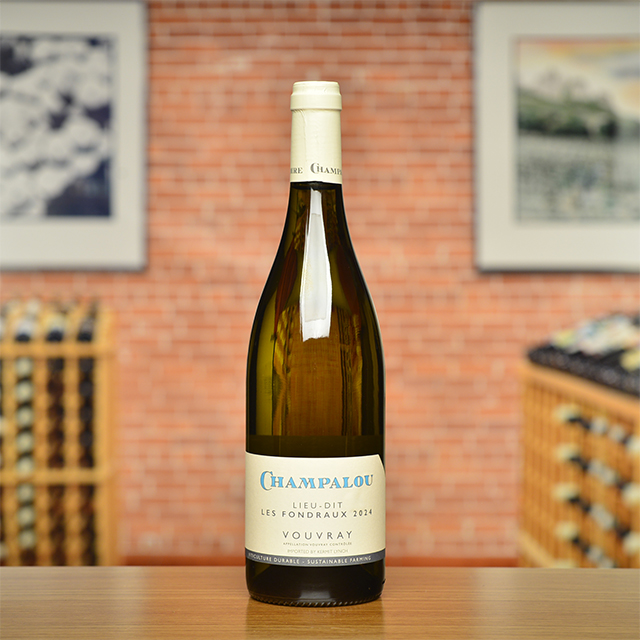
2024 Vouvray “Les Fondraux”
France | Loire
The contrast of ripe, succulent Chenin Blanc fruit with a spike of flinty minerality is like licking honey off an arrowhead.

2024 Jasnières “Cuvée du Silex”
France | Loire
This Chenin Blanc has a tart sweetness, or perhaps a sweet tartness—with neither overbearing—that epitomizes good balance and will have you greedily reaching for your glass.

Vouvray Brut
France | Loire
From clay and limestone vineyards, they are able to obtain remarkable complexity in their Brut, while the texture shows both a creamy richness and an austere minerality.
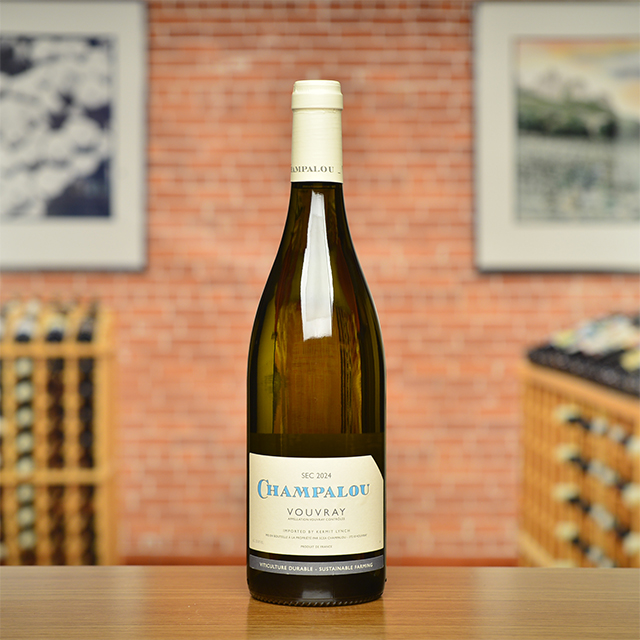
2024 Vouvray
France | Loire
Gentle and refreshing on the palate, it boasts a delightful balance of stony minerality with luscious, almost honeyed fruit and flowery notes.

2017 Jasnières “Chant de Vigne”
France | Loire
A single-vineyard bottling whose age lends a soft, drawn butter richness to its bright, tart citrus palate.
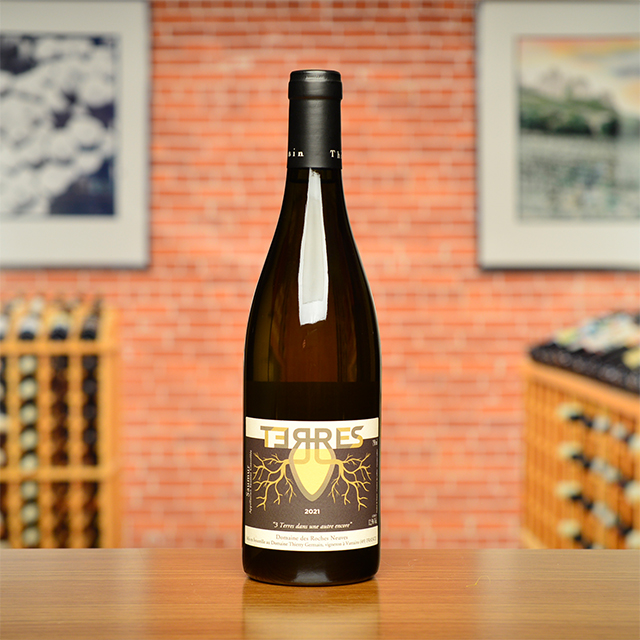
2021 Saumur Blanc “Terres”
France | Loire
Redolent of almonds, honey, and a wide range of citrus, this kaleidoscopic Chenin finishes with a faint tannin, making it ideal alongside sushi, roast chicken, or a hard and flavorful cheese like Comté.
About The Producer
Champalou
About The Region
Loire

The defining feature of the Loire Valley, not surprisingly, is the Loire River. As the longest river in France, spanning more than 600 miles, this river connects seemingly disparate wine regions. Why else would Sancerre, with its Kimmeridgian limestone terroir be connected to Muscadet, an appellation that is 250 miles away?
Secondary in relevance to the historical, climatic, environmental, and cultural importance of the river are the wines and châteaux of the Jardin de la France. The kings and nobility of France built many hundreds of châteaux in the Loire but wine preceded the arrival of the noblesse and has since out-lived them as well.
Diversity abounds in the Loire. The aforementioned Kimmeridgian limestone of Sancerre is also found in Chablis. Chinon, Bourgueil, and Saumur boast the presence of tuffeau, a type of limestone unique to the Loire that has a yellowish tinge and a chalky texture. Savennières has schist, while Muscadet has volcanic, granite, and serpentinite based soils. In addition to geologic diversity, many, grape varieties are grown there too: Cabernet Franc, Chenin Blanc, Sauvignon Blanc, and Melon de Bourgogne are most prevalent, but (to name a few) Pinot Gris, Grolleau, Pinot Noir, Pineau d’Aunis, and Folle Blanche are also planted. These myriad of viticultural influences leads to the high quality production of every type of wine: red, white, rosé, sparkling, and dessert.
Like the Rhône and Provence, some of Kermit’s first imports came from the Loire, most notably the wines of Charles Joguet and Château d’Epiré—two producers who are featured in Kermit’s book Adventures on the Wine Route and with whom we still work today.
More from Loire or France
2024 Vouvray
Champalou France | Loire
2024 Chardonnay
Eric Chevalier France | Loire
2023 Chinon “Les Grézeaux”
Bernard Baudry France | Loire
2019 Vin de France Rouge Grolleau/Cabernet Franc “Clandestine”
Grange Saint-Sauveur France | Loire
2024 Bourgueil “Trinch!”
Catherine & Pierre Breton France | Loire
2024 Muscadet Côtes de Grand Lieu sur lie “La Nöe”
Eric Chevalier France | Loire
2024 Gros-Plant du Pays Nantais
Domaine Michel Brégeon France | Loire
2018 Saumur Blanc “L’Échelier”
Thierry Germain France | Loire
2021 Vin de France Blanche
Domaine Michel Brégeon France | Loire
2022 Saumur Champigny “Terres Chaudes”
Thierry Germain France | Loire
2020 Chinon “Les Varennes du Grand Clos”
Charles Joguet France | Loire
2018 Muscadet Sèvre et Maine “Gorges”
Domaine Michel Brégeon France | Loire
2024 Vouvray
Champalou France | Loire
2024 Chardonnay
Eric Chevalier France | Loire
2023 Chinon “Les Grézeaux”
Bernard Baudry France | Loire
2019 Vin de France Rouge Grolleau/Cabernet Franc “Clandestine”
Grange Saint-Sauveur France | Loire
2024 Bourgueil “Trinch!”
Catherine & Pierre Breton France | Loire
2024 Muscadet Côtes de Grand Lieu sur lie “La Nöe”
Eric Chevalier France | Loire
2024 Gros-Plant du Pays Nantais
Domaine Michel Brégeon France | Loire
2018 Saumur Blanc “L’Échelier”
Thierry Germain France | Loire
2021 Vin de France Blanche
Domaine Michel Brégeon France | Loire
2022 Saumur Champigny “Terres Chaudes”
Thierry Germain France | Loire
2020 Chinon “Les Varennes du Grand Clos”
Charles Joguet France | Loire
2018 Muscadet Sèvre et Maine “Gorges”
Domaine Michel Brégeon France | Loire
Kermit once said...

Kermit once said...
Let the brett nerds retire into protective bubbles, and whenever they thirst for wine it can be passed in to them through a sterile filter. Those of us on the outside can continue to enjoy complex, natural, living wines.
Inspiring Thirst, page 236





